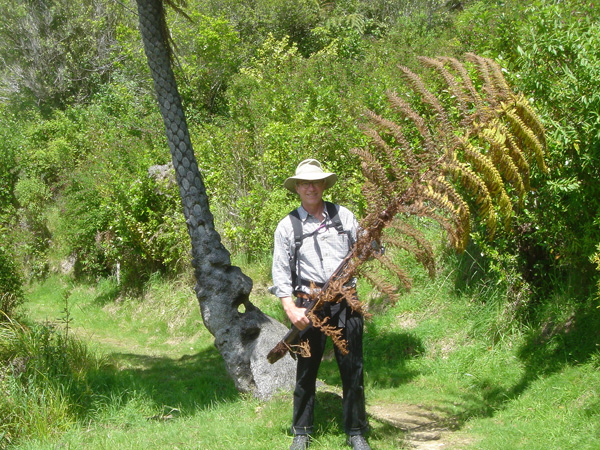Now for some of the notes I wrote in my spiral notebook.
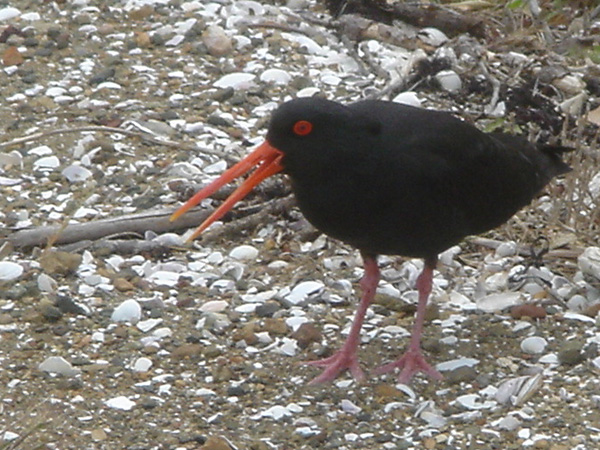
On the way here I watched NZ travel videos on the plane. This one woman was in several of them, a real groover, named Kelly Fanshawe-Jones or something like that, so false and stagey. And then in the Nelson segment she is with a Maori who is luring eels with scraps of meat, big gray eels, and she giddily agrees to lie on her stomach on a wooden footbridge and to reach into the water to touch an eel, she’s showing off for the camera, and then — “Eeeek!” she shrieks at the unexpectedly real touch of the eel and collapses onto the planking, twitching as if after a fit. The Maori smiles and comforts her.
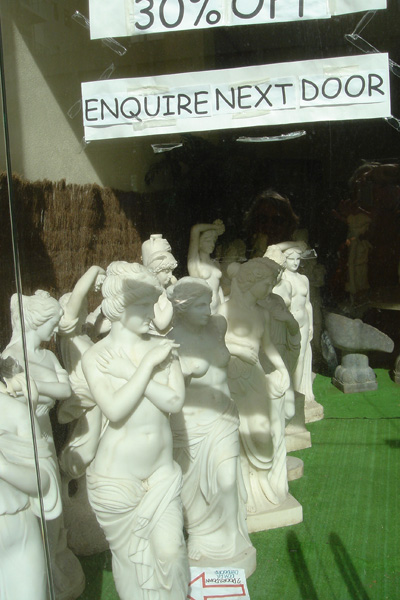
We saw two kiwis in a day-for-night enclosure, dimly illuminated as if by moonlight, a roadside attraction: Kiwi House. They’re only active for 4 hours out of the 24, and those 4 lively hours come at night.
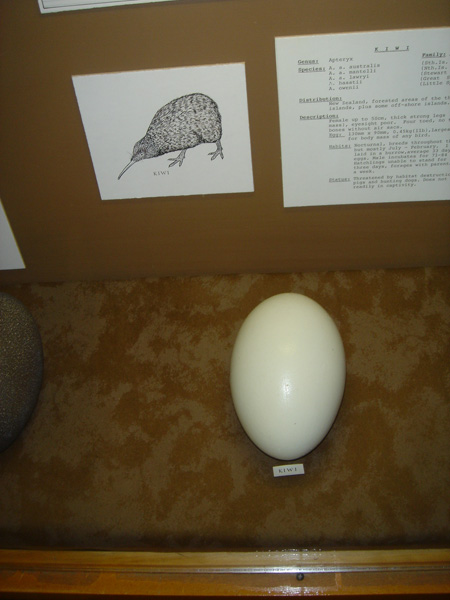
One of the kiwis was quite peppy, trucking around his 10 m x 10 m glassed-in enclosure, poking in the loamy leafy litter with his six-inch beak. The beak surprisingly powerful, readily going deep into the ground.
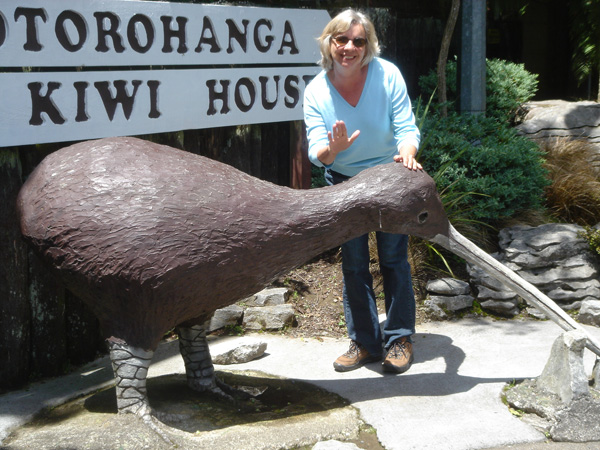
The kiwi’s motions abrupt, hurried, efficient, probing deep and sometimes working the beak from side to side. Although the kiwis have tiny rudimentary wings, I couldn’t see the wings at all, the kiwis totally looked like feather balls with neck, feather-head and beak. They have heavy three-toed claw-like feet, rather large, located so far to the rear of their bodies that you’d almost think they’d fall forward, but they don’t, the mass of the ass holds them down as they Groucho-Marx-pace around, rooting for bugs and every now and then taking a surprising big hop forward, moving several feet in a sudden jump. I see kiwi-like aliens in my next book.
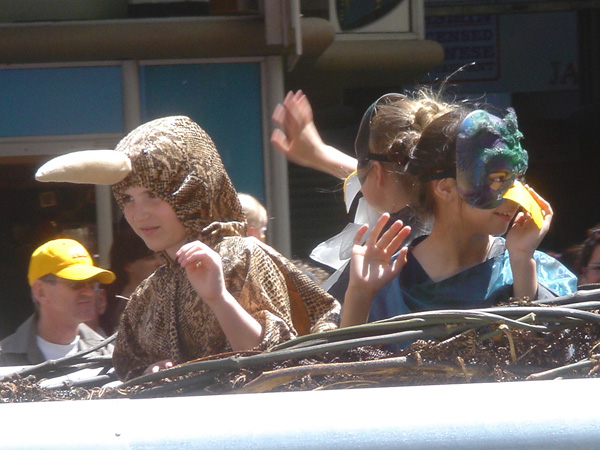
After Sylvia and I went to the Kiwi House, I began imitating a kiwi’s walk — doing this on a public street, much to Sylvia’s embarrassment/delight. Like when I do “zombie” walking stiff-legged with my arms straight out.
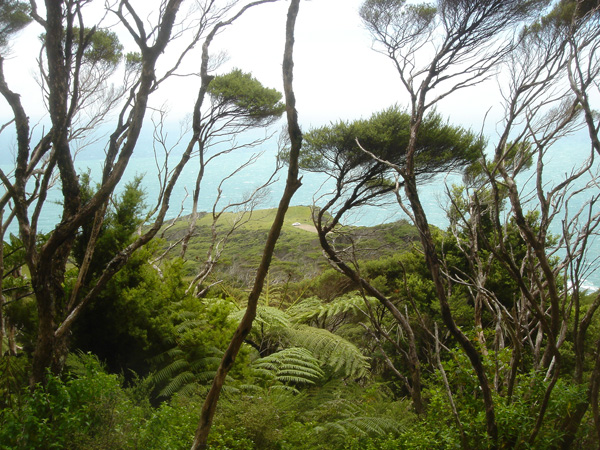
The prettiest place so far was the slopes of Mt. Karioi near the Te Toto gorge south of Raglan on the west coast of the north island. Big Sur dialed up to 11. Pristine green meadows running down to the sea. Tree ferns.
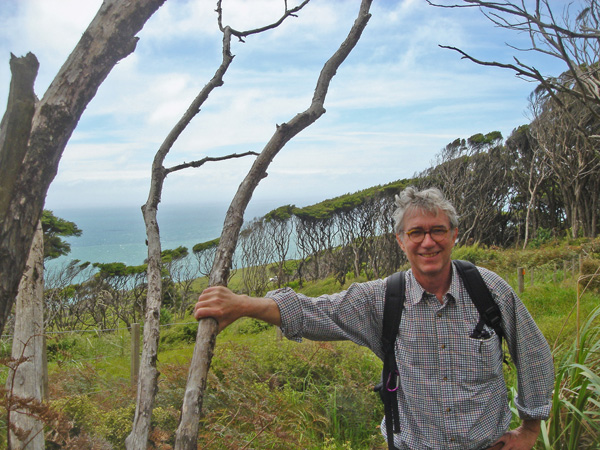
In Raglan I look at an incredibly convoluted fractal on a sign, a map of the intricate harbor and shoreline. A label with a pointing arrow indicates a dot. “You are here.”
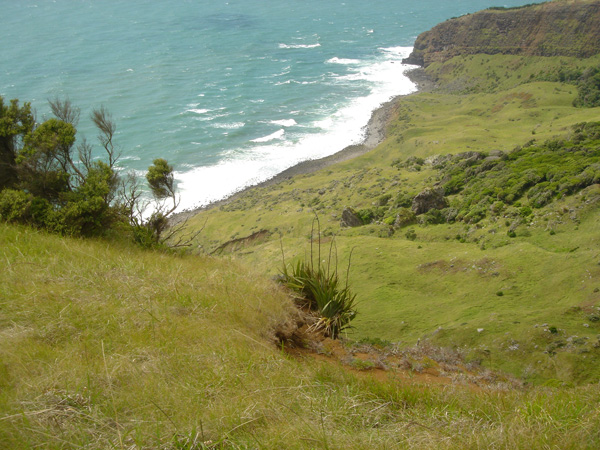
Raglan itself cute, full of surfers, two good cafes: Aqua Velvet and Tongue And Groove. In NZ, a “cafe” is like an order-food-at-the-counter coffee shop both with sandwiches and quiche and often things like chicken curry, mussels, or pasta. Tongue and Groove (apparently a pun on licking vinyl records) was furnished with a half-dozen four-chair dinette sets in aluminum with colorful tops. Fifties style.
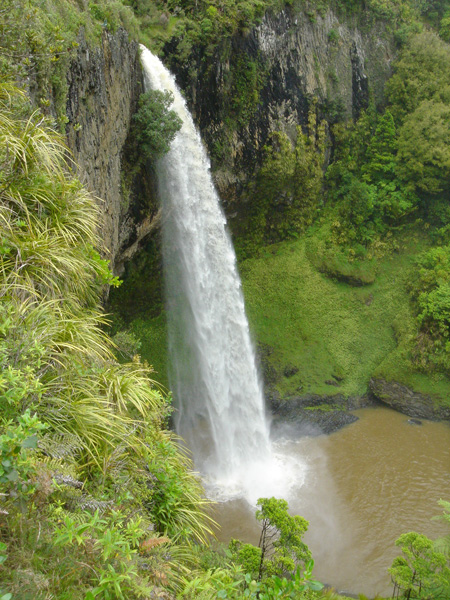
Several times I think of New Zealand as being like the U. S. in the fifties. Back before the population bomb started messing things up. There were only a third as many people in the U. S. back then. Enough for everyone. Pollution not a problem yet.
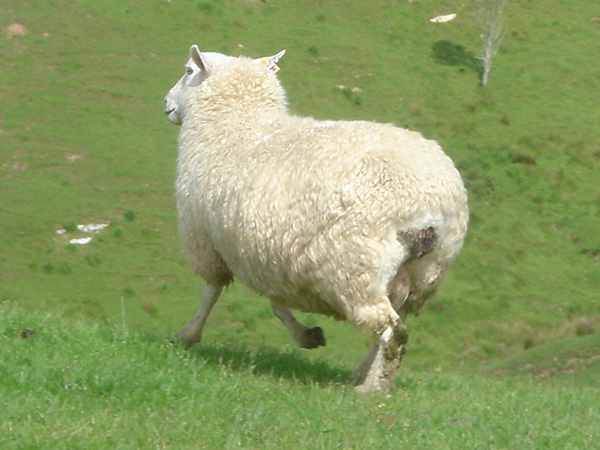
The notion of a beezie living in a fireplace comes naturally to mind as I write this, for I’m sitting in front of a blazing heart at the Tongariro Chateau in a park in New Zealand.
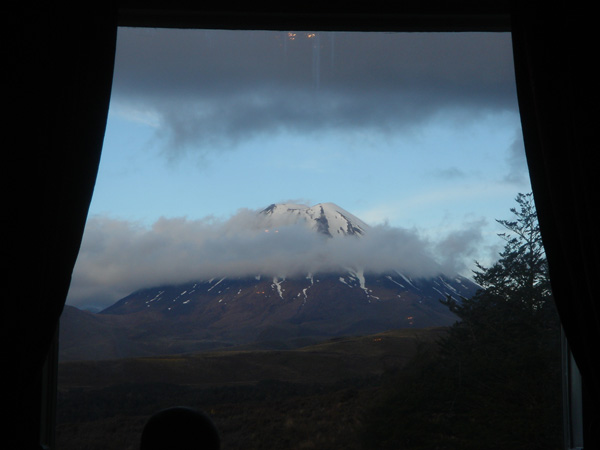
It’s raining so hikes are off. I did three hours in the rain this morning anyway, I felt like Frodo struggle to wards the mountain of Mordor — those LOTR3 scenes were supposedly shot around here.
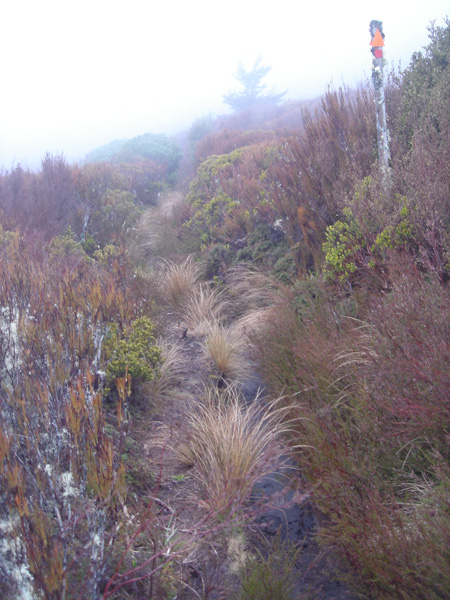
My brain kicked back into novel-planning on the walk, I’ve been recovering from the last big push on Postsingular; until today I didn’t feel like writing again. It’s been, what, all of ten days. But now I, the kiwi, emerge from the burrow and begin poking around with my beak.
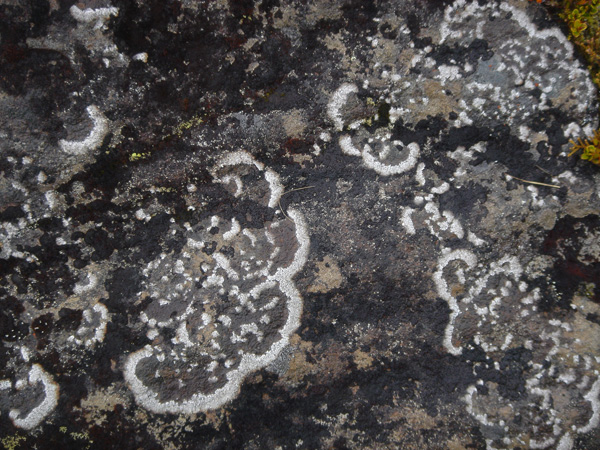
If there’s intelligent quantum computation inside a fire, you might see, say, a fire with square flames. Or wavier. Something subtler. Less smoke. It picks up every trick, thanks to the local air slips helping the fire silp.
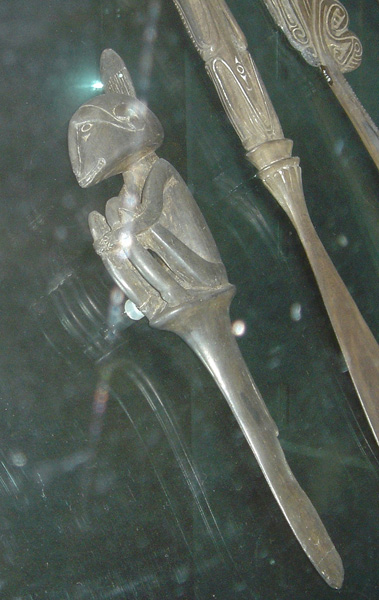
If the silps control their own matter somewhat via quantum computation — if, in other words, every object is to some extent its own effector — then, say, a drinking glass might be harder to break than before. The glass sheds off the vibration phonons in optimal ways so as to avoid catastrophic fracture. Assuming a glass minds being broken. A bean that slyly rolls away to avoid being cooked — sometimes in the kitchen, objects do seem to want to run away.
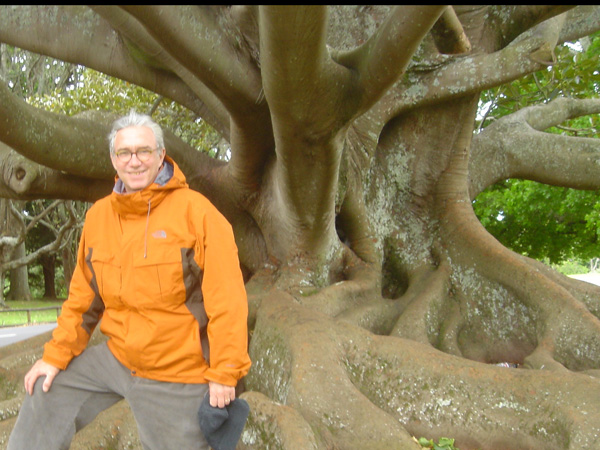
Does a log mind being burned? There’s a quote along these lines (in connection with a lump of coal) in David Skrbina, Panpsychism in the West (MIT Press, 2005) — to the point that it would be a drag if you had to feel guilty about stoking your fire. But maybe silps aren’t so bent on self-preservation? We humans (and animals) have to be like that, so we can live long enough to mate and to raise our young. Otherwise we go extinct. But a log or rocks individual survival doesn’t effect the survival of the race of logs or rocks. Though I suppose if logs were impossible to burn, fewer trees would be sawed down, which would be perhaps a good thing from the viewpoint of the logs.
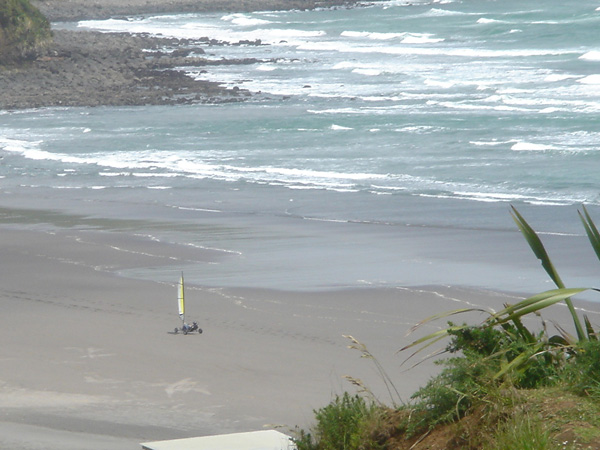
“She’s a cruisy mal rider.” Quote from a surfer girl talking about her surfer sister in Curl.
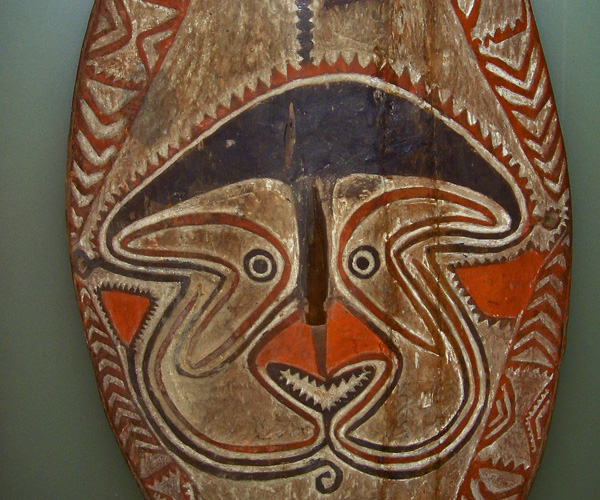
I went into a store in Wellington called Eyeball Kicks, they sell stickers and hot rod art objects. The owner Calvin said he got the name from a book on Big Daddy Roth, with an introduction by Coop. He was impressed that I know Coop, and said to say hi to him.
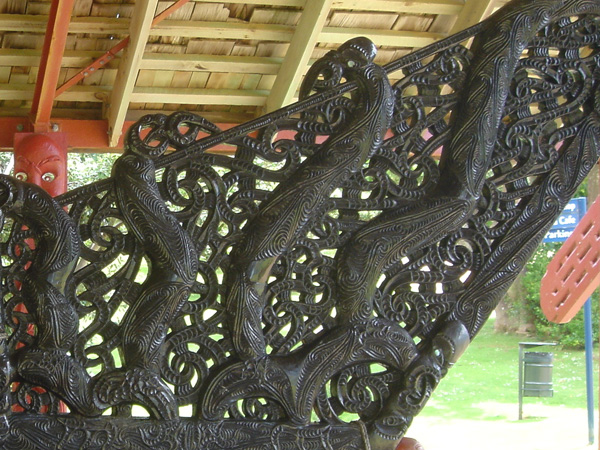
In the Te Papa museum in Wellington I saw an amazing 9 minute video from 1928 made by Len Lye who drew about 4,500 frames for it, inspired by a Maori dance where the dancers imitate the twitching of a wekahee grub worm. A shame the film isn’t online. Tusalava. I read a bit of a bio of Lye. The British censor didn’t want to approve the abstract Tusalava for showing as it “seems to have no meaning, and if there is a meaning it’s surely unsuitable.”
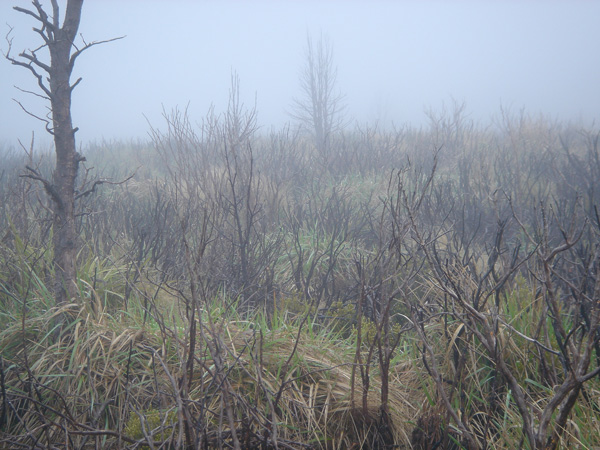
“Tapu” vs. “Noa” is sacred vs. open.
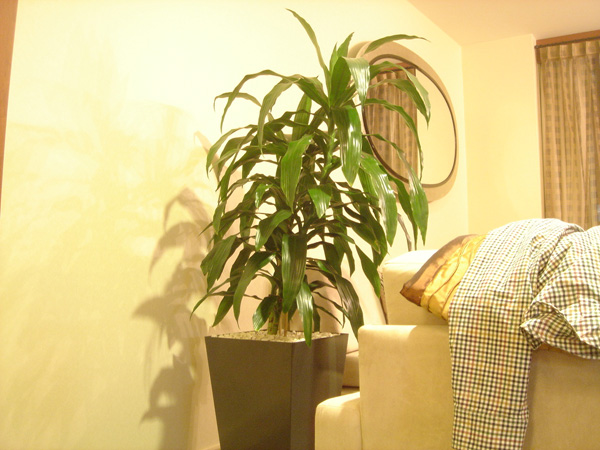
Writing these notes in a hotel room in Wellington, I suddenly notice a large potted plant in the room with me, and it wasn’t here a few minutes ago. Green, shiny leaves, two meters high, like corn or, I guess, a banana tree. It’s an alien in disguise. Straining with effort I lift it up — pot and all, for surely the thing’s brain is in the pot — and I hurl it through the plate glass window of this fifth floor room to the street below. Whew. Just in the nick of time.
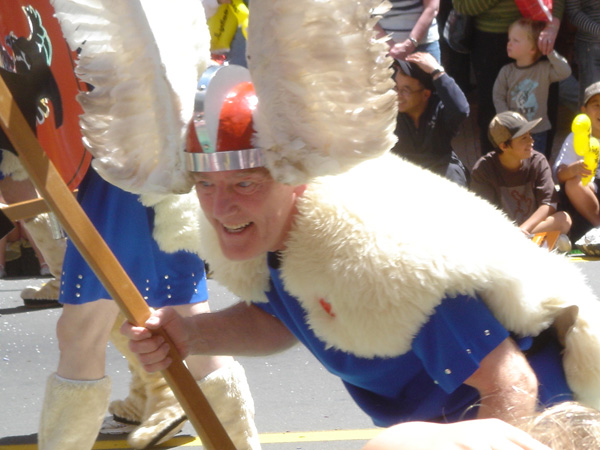
Tomorrow the Children’s Christmas Parade will take place on this street, Lambton Quay.
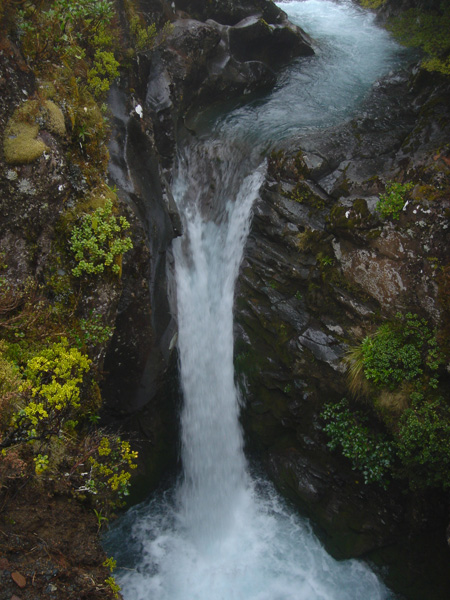
On Thanksgiving Day, November 23, 2006, we were at Lochmara Lodge, an “eco resort” on Lochmara Bay off the Queen Charlotte Sound in the Marlborough Sounds area in the northeast part of the south island of New Zealand. “You are here.”
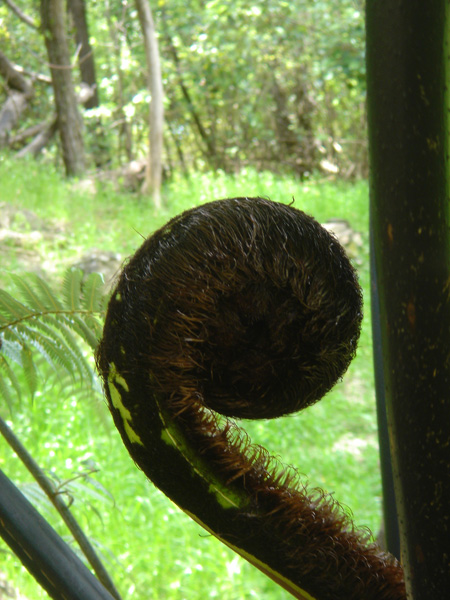
We’re allowed to fetch our morning eggs from a hay-bale-filled barn while the chickens cackled, not all that upset. I made friends with a pig. She had a ring in her nose. Anyone thinking of doing that to themselves should look at the pig.
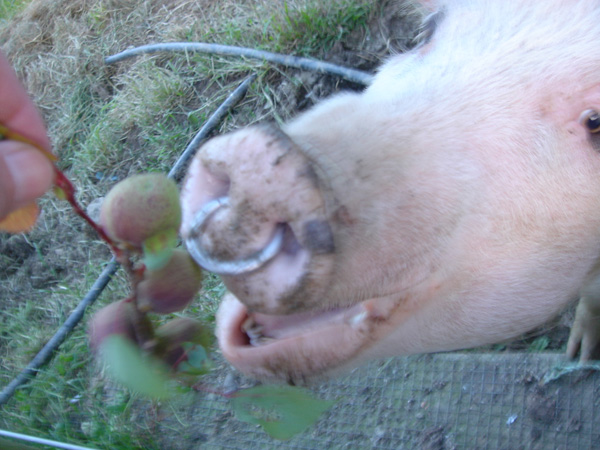
A bit lonely and nostalgic for American Thanksgiving, thinking of our three kids celebrating without us. I asked the cook about T’giving dinner, he said, “This is New Zealand, mate. Not the U S.” Our dinner was veggie burgers! No alternative, really, as we were isolated, a goodly boat ride from town. It was a good veggie burger though, with shredded beets on it.
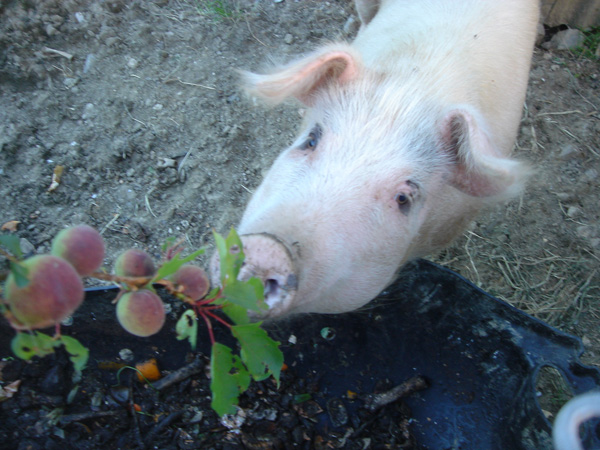
I think of the old Thanksgivings in Lynchburg and Louisville, with a bottle of 110 proof Wild Turkey on the kitchen counter, shared by me, my father and my big brother. Those were the days. Last night I dreamed I’d gone to someone’s math colloquium talk on infinity while I was blacked-out drunk, and had given the speaker a hard time. People kept mentioning it to me in my dream. They’d found my performance amusing, but I didn’t remember any of it.

Another dream of children in costumes, for a parade, they start chanting for freedom — my notion of freedom — I’m exhilarated, the children are jumping up and down, chanting faster, they break into small colored shapes, moving about in beautiful figures of a dance. Ecstatic joy.
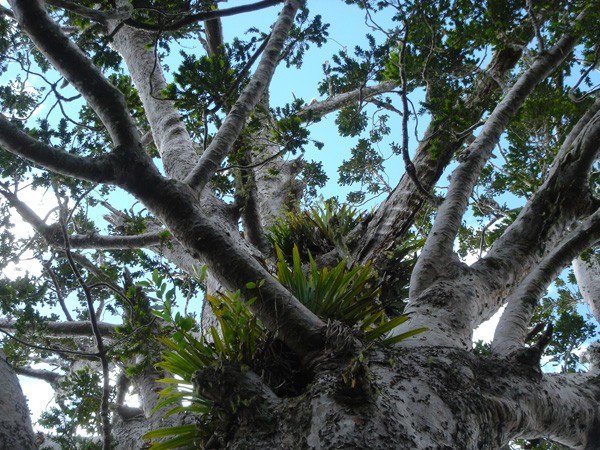
In my happy frame of mind here, I’m thinking about myself in an unusually positive way. From boyhood on, my friends found it fun to be with me, I’m a fount of new ideas. I recall my friend Don in college saying, “You’re such a bode,” this being the then-slang for bohemian or beatnik in the pre-hippie days. I could elaborate on this personality aspect for Thuy in Postsingular 2. Speaking of PS2, Chu’s brain should get well.
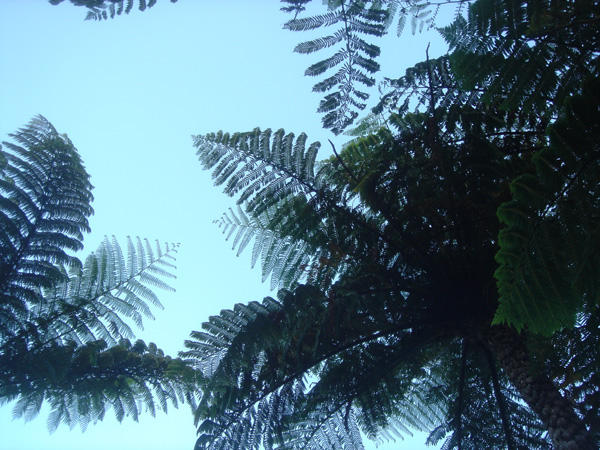
It’s not about the food at Lochmara anyway, it’s about the ferns, a. k. a. punga trees, 20 or 30 feet tall ferns with a “trunk” that’s a mass of tubes (aerial roots). And a big frizz of 8 foot fern fronds on top.
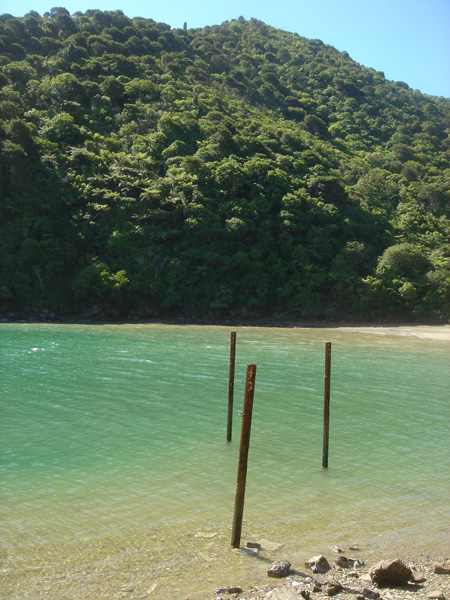
Such density of organic computation here in the rain forest near Queen Charlotte Sound. The brook-filled fern forests in the gusty wind. Imagine after Lazy Eight day in Postsingular, after the Gaian Birthday when “everything wakes up.” A rural pristine jungle is computationally richer than a sterile locale like Silicon Valley or the Apple campus.
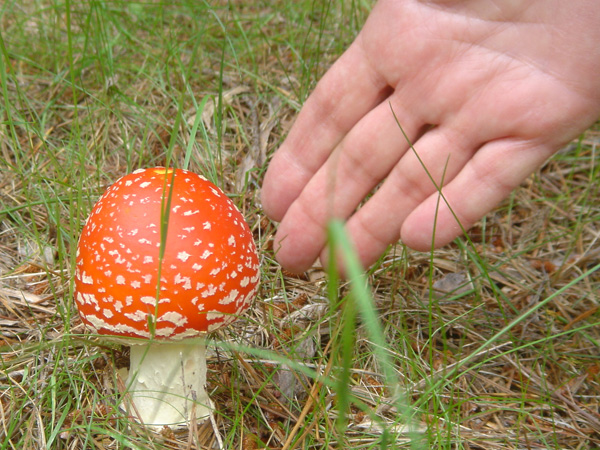
I saw some Gordon Wasson type amanita muscaria , which he wrote about in his book, Soma: the Divine Mushroom of Immortality. I used to have a copy of this book, back in the 70s, but Sta-Hi Mooney’s real-world model borrowed it from me and never gave it back. He lost it or sold it or gave it away.
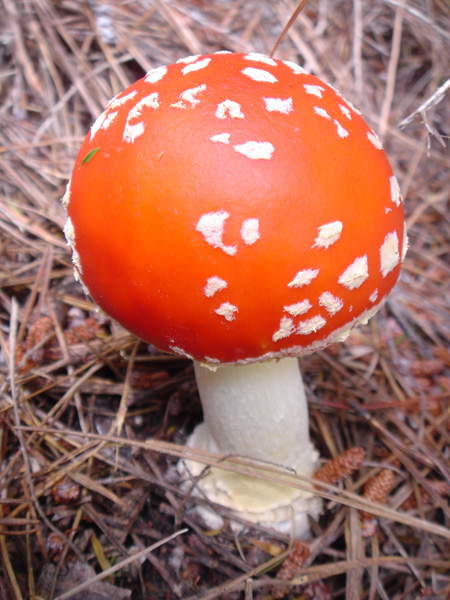
We saw a bunch of these shrooms in one spot near the Lodge: a baby bud, a blushing child, a rosy bright red youth, a mature red disk, a yellowing turned-up spored-out adult, and a two wilted boneless flattened dead ones flopped onto the ground. The cycle of mushroom life. I smiled, filled with fond memories of the story Bruce Sterling and I wrote about these shrooms as connected to the Tunguska event in Siberia, “Storming the Cosmos.” Didn’t eat any, though.
